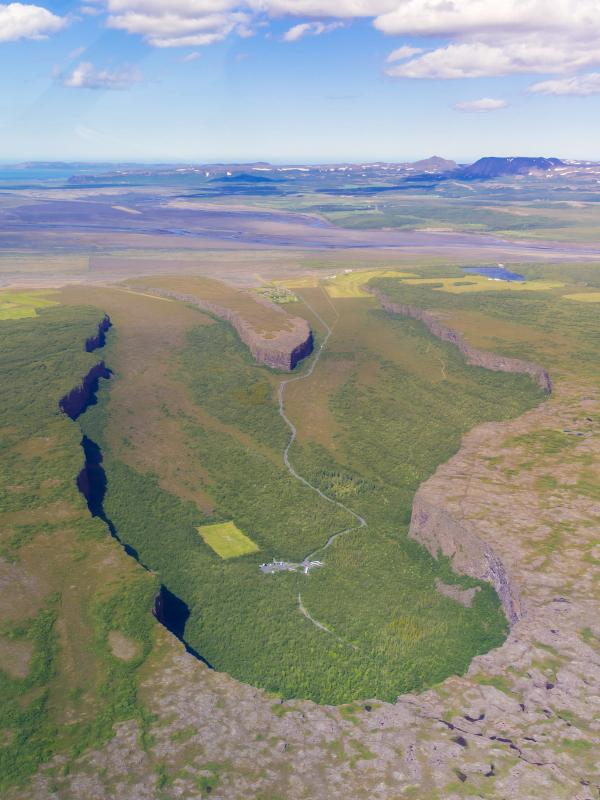
15 Unforgettable Places to Visit in North Iceland
While most travelers stick to Iceland’s south, the north quietly delivers some of the country’s most unforgettable landscapes with a fraction of the crowds. Picture wide-open roads winding past steaming geothermal fields, thundering waterfalls, and quiet fishing villages where whale watching is part of daily life. The Diamond Circle, a scenic 250 km loop through the northeast, ties it all together, but there’s plenty more to explore off-route too.
Whether you’re soaking in natural hot water under the midnight sun or trekking through the northern territory of Vatnajökull National Park, North Iceland rewards those who make the effort. This guide covers 15 of the best places to visit – some famous, some not – each worth the detour on your campervan adventure.
1. Akureyri: The Capital of the North
A laid-back town with fjord views and surprising depth, Akureyri is the cultural and logistical heart of North Iceland.
Why Go
Iceland’s second-largest town is cradled by the long, still waters of Eyjafjörður, the country’s longest fjord. Akureyri feels like a real town, not just a stopover, with enough going on to stay a while. You’ll find a vibrant arts scene, excellent restaurants, and a dramatic fjord backdrop in every direction. The iconic Akureyrarkirkja church towers over a compact, walkable center filled with cozy cafés, galleries, and local shops. Summer brings botanical gardens in full bloom, while winter turns nearby Hlíðarfjall into a premier ski resort – with a strong chance of seeing the northern lights overhead.
How to Get There
Akureyri is located along the Ring Road (Route 1), about 390 km (5–6 hours) from Reykjavik. The drive is paved and easy in summer; in winter, check the weather and road conditions before setting out. There’s ample free parking throughout town, including near the swimming pool and main church. Gas stations, grocery stores, and a full-service campsite make it an ideal rest and resupply point for campervans.
Must-do Experiences in Akureyri:
- A walk through Akureyri's Botanical Garden to see Iceland's remarkable flora
- A visit to Akureyrarkirkja church for the town's best views
- Time in Kjarnaskógur woodland, the local favorite for outdoor recreation
- Immersion in local culture through museums, art galleries, and live music at venues like Græni hatturinn
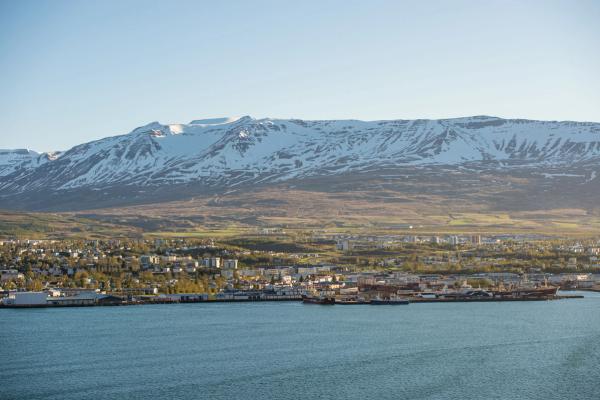
2. Húsavík: Whale Watching Capital of Europe
This colorful harbor town is renowned as the whale-watching capital of Iceland, with tours departing into the mountain-lined bay.
Why Go
Set on Skjálfandi Bay, Húsavík is Iceland’s top whale-watching destination, and one of the best in Europe. Calm waters and rich feeding grounds attract humpbacks, minkes, dolphins, and the occasional blue whale. You’ll often see humpbacks breach just meters from the boat. Back on land, the Whale Museum dives into cetacean science and history, and there are excellent seafood restaurants lining the harbor for a post-cruise meal.
The best time for whale-watching tours is from April until October.
How to Get There
From Akureyri, take Route 1 east, then turn onto Route 85 north to reach Húsavík – about a 1-hour drive. The roads are paved and suitable for all vehicles throughout the year. The harbor area has free parking, and the town’s small size makes everything walkable. Whale watching tours depart from the main pier several times a day in summer.
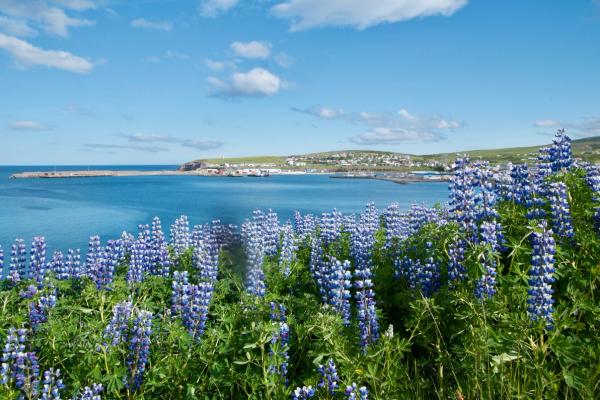
3. Dettifoss: Europe’s Most Powerful Waterfall
Thundering, mist-shrouded, and a waterfall you’ll feel before you see. Dettifoss is the biggest attraction in North Iceland.
Why Go
Dettifoss is a force of nature, thundering over a 45-meter drop into Jökulsárgljúfur canyon with a deafening roar and a constant cloud of mist. Fed by meltwater from Vatnajökull, it is Europe’s most powerful waterfall, with a huge amount of water churning over the edge every second. The thundering roar is just as physical as it is visual. The landscape here feels stark and freshly carved.
How to Get There
Dettifoss has two main access routes:
- East side (Route 864): A gravel road that offers the most dramatic views but is rougher and slower – 4x4 recommended. Fewer facilities but closer to the falls.
- West side (Route 862): A paved road with a large parking lot, marked trails, and wooden viewing platforms. Accessible by 2WD. This route is easier and safer, especially in shoulder seasons.
Both roads are typically open from June to September, depending on snow and road conditions. Outside of that, the roads aren’t serviced, which often means they’re impassable in winter.
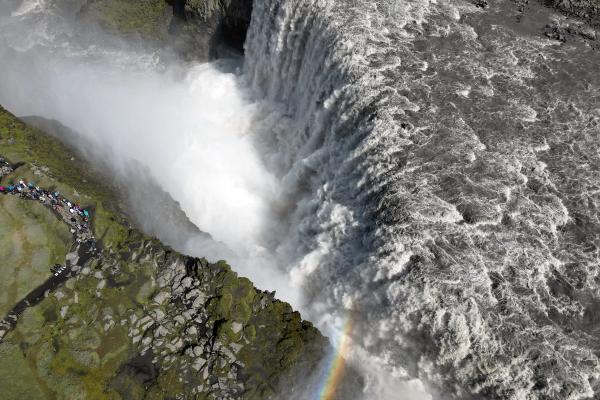
4. Ásbyrgi Canyon: The Horseshoe of the Gods
With its soaring cliffs and hidden forest, Ásbyrgi feels like a place pulled from myth, home to some stunning hiking trails that not many people take the time to explore.
Why Go
Ásbyrgi is a horseshoe-shaped canyon surrounded by 100-meter-high cliffs and filled with forest – a rare sight in Iceland. A small lake reflects the rock walls, and birdsong echoes through the peaceful ravine. According to Norse legend, it was formed by Sleipnir, Odin’s eight-legged horse. Today, it’s considered the “capital” of Iceland’s hidden people. The trails here are gentle, the atmosphere serene, and the mythology thick in the air.
How to Get There
Ásbyrgi lies along the Diamond Circle on Route 85, north of Dettifoss. Access is right off Route 85 leading from Húsavík. There’s a visitor center with seasonal hours, well-maintained parking, toilets, and campsites nearby. The main trails start right from the lot and are suitable for all hikers.
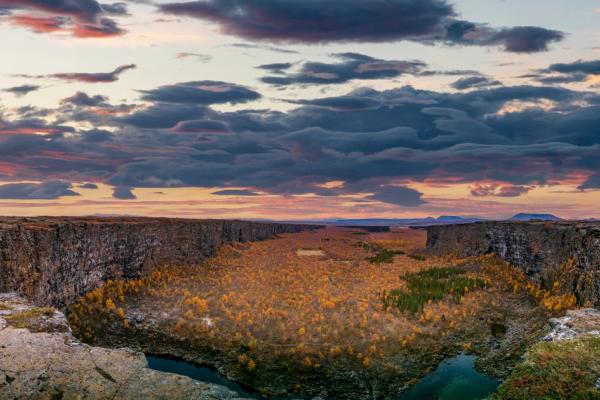
5. Lake Mývatn: A Volcanic Wonderland
Surreal and volcanically charged, Lake Mývatn is a place where steam rises from lava fields and ducks nest between craters.
Why Go
Formed by a volcanic eruption 2,300 years ago, Mývatn is ringed with craters, lava stacks, and geothermal fields. The lake is a haven for birdlife, especially ducks, and nearby sights, such as the Mývatn Nature Baths, Hverfjall crater, and Dimmuborgir lava formations, offer endless options for exploration. The landscape shifts dramatically from one stop to the next, making it a highlight of any northern itinerary.
How to Get There
Lake Mývatn is just off Route 1 between Akureyri and Egilsstaðir. Roads are paved and remain open year-round, although snow is common during the winter. The main village, Reykjahlíð, has gas, groceries, and a campsite. Many attractions have small free car parks, but that’s slowly changing across the country as facilities at parking areas improve for the better.
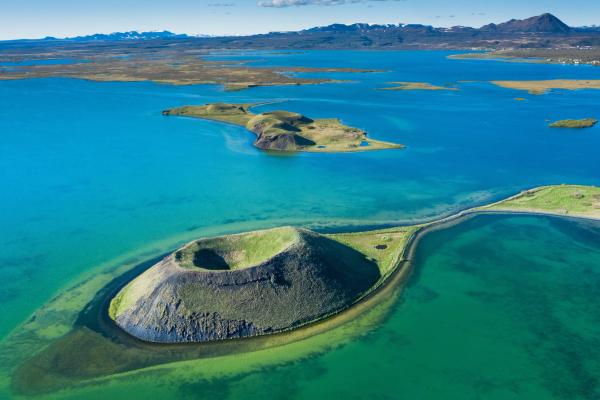
6. Hverir Geothermal Area: Iceland’s Martian Landscape
Step into a steamy, sulfuric wasteland where the earth gurgles, bubbles, and steams beneath your feet.
Why Go
Hverir is a chaos of steam, mud, and sulfur, a place where the earth never quite sits still. Home to hissing steam vents, boiling mud pots, and vivid mineral colors, this geothermal area is a must-visit in North Iceland. The contrast between rust-red soil and stark white steam is mesmerizing, and the sulfur-scented air reminds you just how close the magma lies below. It’s raw, photogenic, and surreal, especially with snow underfoot or golden-hour light.
How to Get There
Located just east of Lake Mývatn on Route 1, Hverir is well-signed and hard to miss. There’s a free gravel parking area near the geothermal field with access to marked walking paths. No services are available here, so bring what you need. Wear shoes with a good grip, especially in winter when paths can be icy.
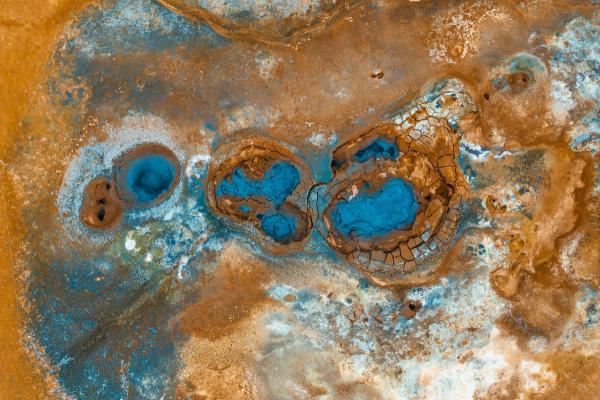
7. Dimmuborgir: The Dark Castles of Lava
Twisted towers and craggy caves make this lava field feel like a forgotten fortress, and it's home to Iceland’s famous Yule Lads – the country’s thirteen Santa Clauses.
Why Go
Dimmuborgir was formed when a lava lake collapsed, creating strange rock formations that resemble castles and cathedrals. Icelandic folklore says the Yule Lads live here, and it’s easy to see why – this place feels mythical. Game of Thrones fans will recognize the area from various scenes in the show. Trails wind through the formations with names like "The Church" and "The Troll’s Seat", and views stretch out over Lake Mývatn.
How to Get There
Dimmuborgir lies just 2 km south of Reykjahlíð, reachable via a short detour off Route 1. A paved road leads to a large parking lot (free) with restrooms and a small café open in summer. Trails are clearly marked, with loop options for different fitness levels.
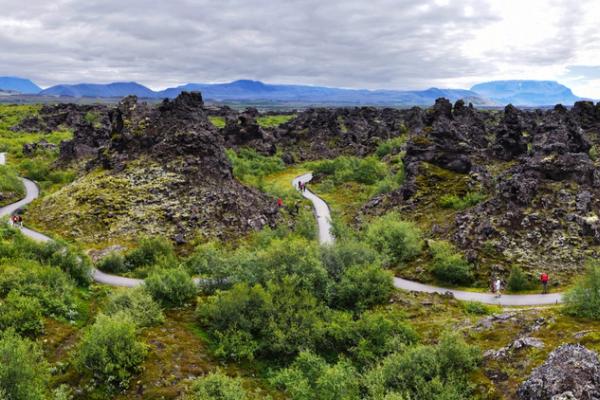
8. Grjótagjá Cave: A Hidden Hot Spring
Game of Thrones fans will know Grjótagjá as the cave where Jon and Ygritte had their secret tryst; for everyone else, it’s a beautiful, little hot pool hidden beneath some rocks, warmed by the Earth's heat.
Why Go
Grjótagjá is a small cave with a stunning hot spring pool once used for bathing. These days, the water is too hot for swimming, but the cave remains a striking stop, especially for Game of Thrones fans, as it was featured in Jon and Ygritte’s famous scene. The crystal-clear water glows under the right light, and the steamy interior feels like a secret chamber.
Swimming here is strictly forbidden due to how swiftly the temperatures can change from warm to boiling due to volcanic activity.
How to Get There
From Reykjahlíð, drive about 5 minutes east on Route 1, then turn off to a short gravel track leading to the cave. A small parking area is available for free, with signage that explains the geology and history. The cave entrance is low, so bring a headlamp or a phone light if you plan to visit late in the day.
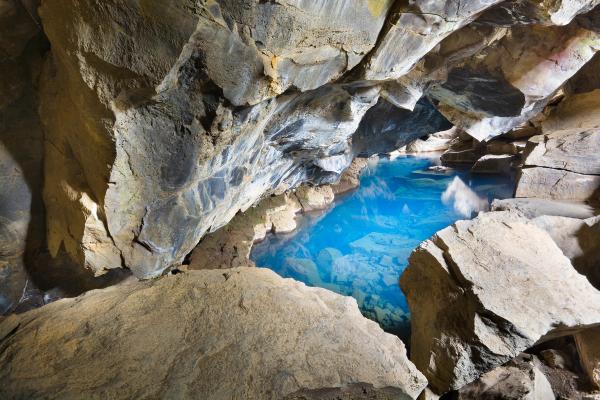
9. Hverfjall Crater: Hike a Perfect Volcano
Hike to the top of this black volcano, rising from one side of Lake Mývatn and providing stunning panoramas from the top.
Why Go
This perfectly symmetrical ash crater is about 1 km across and 140 meters deep. A short but steep trail leads to the rim, where panoramic views take in Lake Mývatn, Dimmuborgir, and even distant peaks like Herðubreið. The crater’s stark simplicity makes it unforgettable, especially at sunrise or under the midnight sun.
How to Get There
Hverfjall is accessible via gravel roads from either Dimmuborgir or Reykjahlíð. There’s a small parking lot at the base, and the trails are well-signed. Use only the official paths to protect the fragile environment. Sturdy shoes are essential – volcanic gravel can be loose and slippery.
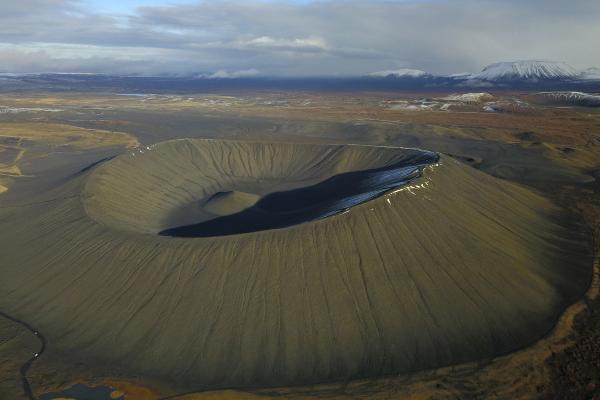
10. Goðafoss: The Waterfall of the Gods
Wide and thundering, Goðafoss is one of North Iceland’s most iconic sights, beautiful in every season and tied to one of Iceland’s defining stories.
Why Go
Goðafoss gets its name from a pivotal moment in Icelandic history, when a local chieftain is said to have thrown his pagan idols into the falls after converting to Christianity. Today, it’s loved for its crescent shape, teal-blue water, and easy viewpoints on both sides of the river. Visit in winter to see it framed in ice, or at midnight in summer for glowing golden light.
How to Get There
Located right off Route 1 between Akureyri and Lake Mývatn, Goðafoss has parking lots on both the east and west sides of the river. The west side has a café and facilities, while the east side tends to be quieter. Paths are well-maintained, though icy in winter – cleats recommended.
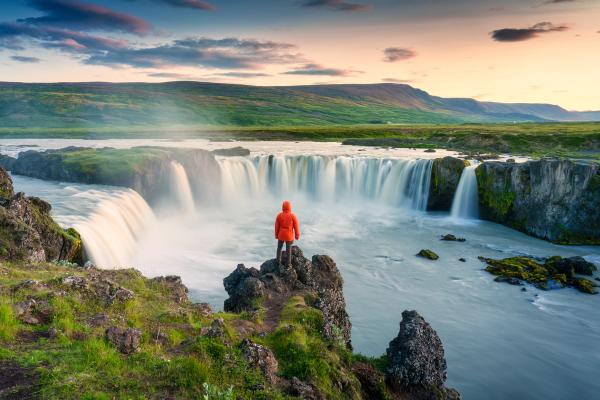
11. Skútustaðagígar Pseudo-Craters
On the southern shore of Mývatn, these grassy domes look like real volcanic craters and provide an easy and quick stop for a walk.
Why Go
Skútustaðagígar are pseudo craters that formed when lava flowed over wetlands, causing steam explosions. Today, these perfectly rounded mounds are covered in grass and low shrubs, with walking trails weaving between them. Good for an easy leg-stretch and one of the best spots around Mývatn for birdlife.
How to Get There
Just south of Reykjahlíð on Route 1, follow signs to Skútustaðir village. There’s a free parking lot beside the trail network and hotel. The loops are short and easy, perfect for stretching your legs between bigger stops.
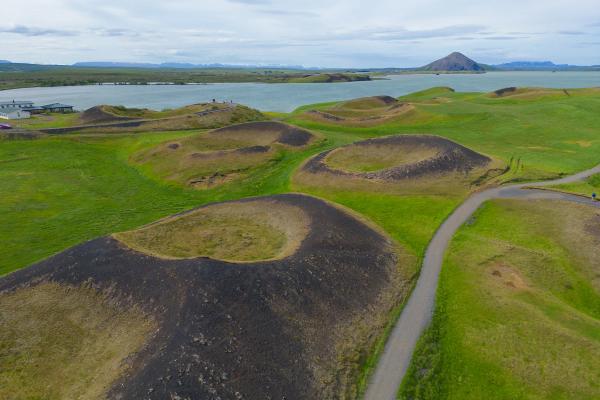
12. Krafla Volcano and Viti Crater
The Krafla volcanic system feels alive with geothermal energy, steaming vents, and a vivid turquoise crater lake.
Why Go
Krafla has erupted more than two dozen times in recorded history, and it still simmers just beneath the surface. The main attraction is the Víti crater, whose teal lake is ringed by a steep, walkable rim. Nearby, the Leirhnjúkur lava field is like a moonscape of recent eruptions, still warm in places, with sulfur vents and cracked black rock. It’s one of the most active volcanic zones in the country.
How to Get There
From Route 1, take the turnoff for Krafla just past Hverir. A paved road leads past the geothermal plant to a gravel lot at Víti. From here, trails connect to Leirhnjúkur and other nearby sites. Roads are open seasonally – as always, check conditions if visiting in winter.
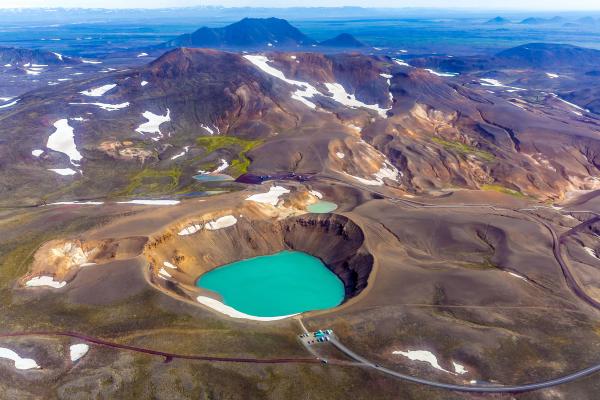
13. Mývatn Nature Baths: The Blue Lagoon of the North
Milder, quieter, and surrounded by lava fields, a good soak here hits different after a day of volcano hikes and gravel roads.
Why Go
With warm, milky-blue water and panoramic views of the volcanic landscape, the Mývatn Nature Baths offer a soothing soak without the crowds of the Blue Lagoon. The mineral-rich water is geothermally heated and naturally replenished. Facilities include modern changing rooms, showers, a steam bath, and an on-site café. Sunset here is especially beautiful, and even in winter, it’s blissfully relaxing.
How to Get There
Just 3 km from Reykjahlíð, follow the signs up the hill on Route 848. There’s a large car park (free), and entry can be booked in advance online (recommended in summer). Towels and swimsuits are available to rent. Open year-round, with long hours in summer for soaking under the midnight sun.
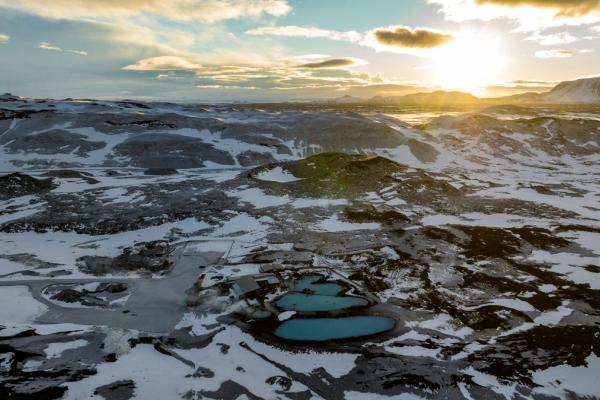
14. Forest Lagoon: Hot Soaking with a Fjord View
Tucked into a hillside just outside Akureyri, this upscale geothermal spa features still water, pine forest, and clean lines.
Why Go
Opened in 2022, the Forest Lagoon offers a quieter alternative to the south’s better-known spas. Built into a pine-covered slope overlooking Eyjafjörður, its sleek infinity-edge pools are fed by natural geothermal water. Guests can soak in two main pools, dip into a cold plunge, or unwind in a glass-walled sauna. There’s also a swim-up bar and on-site restaurant, making it a great stop after a long drive – or a luxury break between hikes.
How to Get There
The Forest Lagoon is located just off Route 83, a few minutes' drive from central Akureyri. Follow signs after passing through the Vaðlaheiðargöng tunnel. There’s a free parking lot on site, and campervans can park here comfortably. Entry is paid; booking ahead online is recommended, especially in summer.
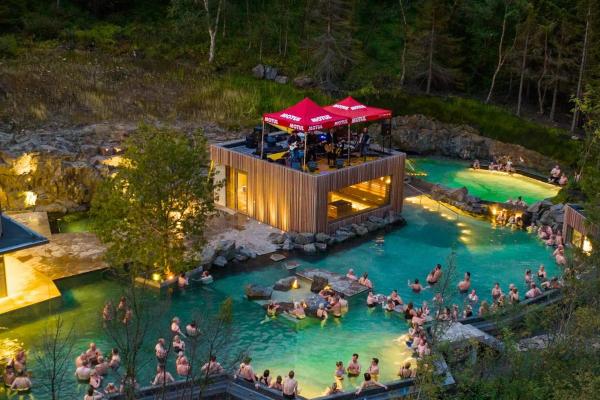
15. Siglufjörður: Iceland’s Herring Town
Siglufjörður is a charming slice of old-school Iceland surrounded by steep mountains and a spectacular fjord.
Why Go
Once the herring capital of the North Atlantic, Siglufjörður boomed in the early 20th century, and its excellent Herring Era Museum brings that history to life with immersive exhibits. The town is filled with brightly painted buildings, cozy cafes, and stunning harbor views. In summer, it hosts music festivals and sailing regattas; in winter, it’s a base for ski touring and avalanche-prone adventure.
How to Get There
From Akureyri, take Route 82 north through a series of tunnels. The final approach is dramatic, especially under snow. Roads are paved and usually open year-round, though closures happen in winter. Parking is free throughout town, including near the museum and harbor.
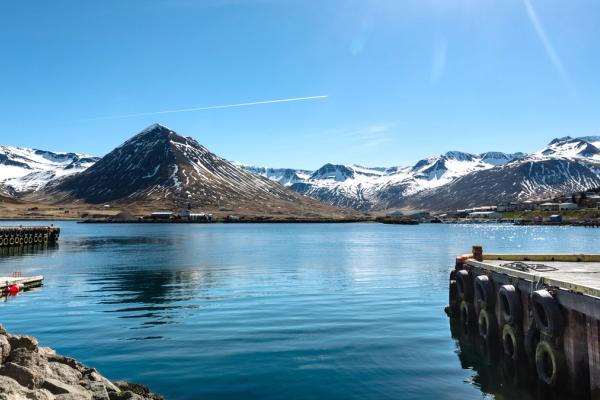
The Magic of North Iceland
North Iceland is where the country’s raw beauty meets peaceful open space, a land of steaming vents, plunging waterfalls, glacial peaks, and sleepy fishing towns. Whether you’re chasing auroras in winter or bathing in the midnight sun, this region offers something slower, wilder, and a little less polished.
